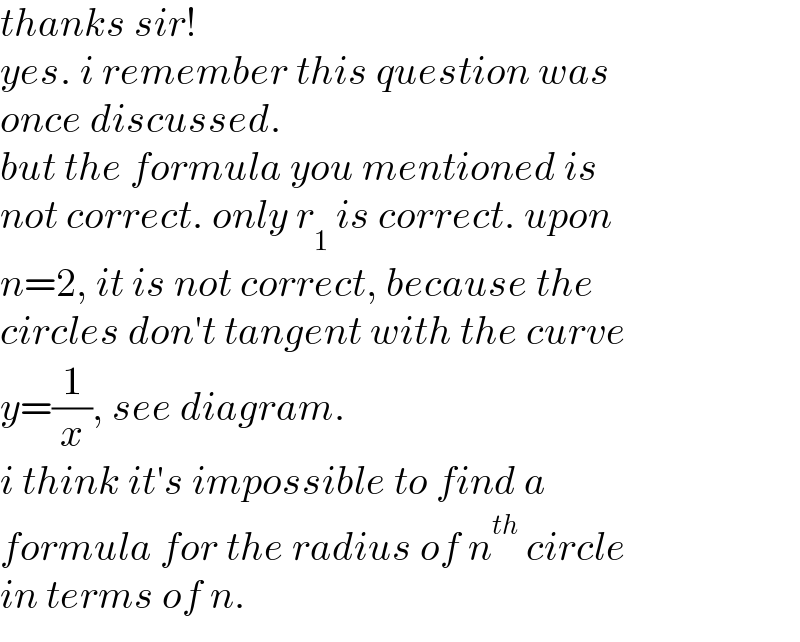
Question and Answers Forum
Question Number 163280 by mr W last updated on 05/Jan/22

Commented by mr W last updated on 05/Jan/22

Commented by aleks041103 last updated on 05/Jan/22

Commented by behi834171 last updated on 07/Jan/22

Commented by mr W last updated on 07/Jan/22

Commented by mr W last updated on 08/Jan/22

Answered by ajfour last updated on 06/Jan/22

Commented by ajfour last updated on 08/Jan/22
![y^2 =x^2 +2 y=(√(x^2 +2)) (dy/dx)=(x/( (√(x^2 +2))))= a(√2)+a=(√2) ⇒ a=2−(√2) A[0,2(√2)−2] let B[(a+b)sin θ, a(√2)+(a+b)cos θ] b=((a(√2)+(a+b)(cos θ−sin θ))/( (√2))) let Circle B touches y=(√(x^2 +2)) at T_2 [p,(√(p^2 +2))] a(√2)+(a+b)cos θ+bsin φ=(√(p^2 +2)) (a+b)sin θ−bcos φ=p subtracting ⇒ a(√2)+(√2)(b−a)+b(sin φ+cos φ) =(√(p^2 +2))−p .....(i) tan φ=((sin φ)/(cos φ))=(p/( (√(p^2 +2)))) ⇒ p^2 =(2/(cot^2 φ−1)) ...(ii) and (p+bcos φ)^2 +((√(p^2 +2))−a(√2)−bsin φ)^2 =(a+b)^2 ⇒ p^2 +b^2 +2bpcos φ +((√(p^2 +2))−a(√2))^2 −2b((√(p^2 +2))−a(√2))sin φ=(a+b)^2 ......(iii) three eqns. unknowns: b,p,tan φ](Q163602.png)
